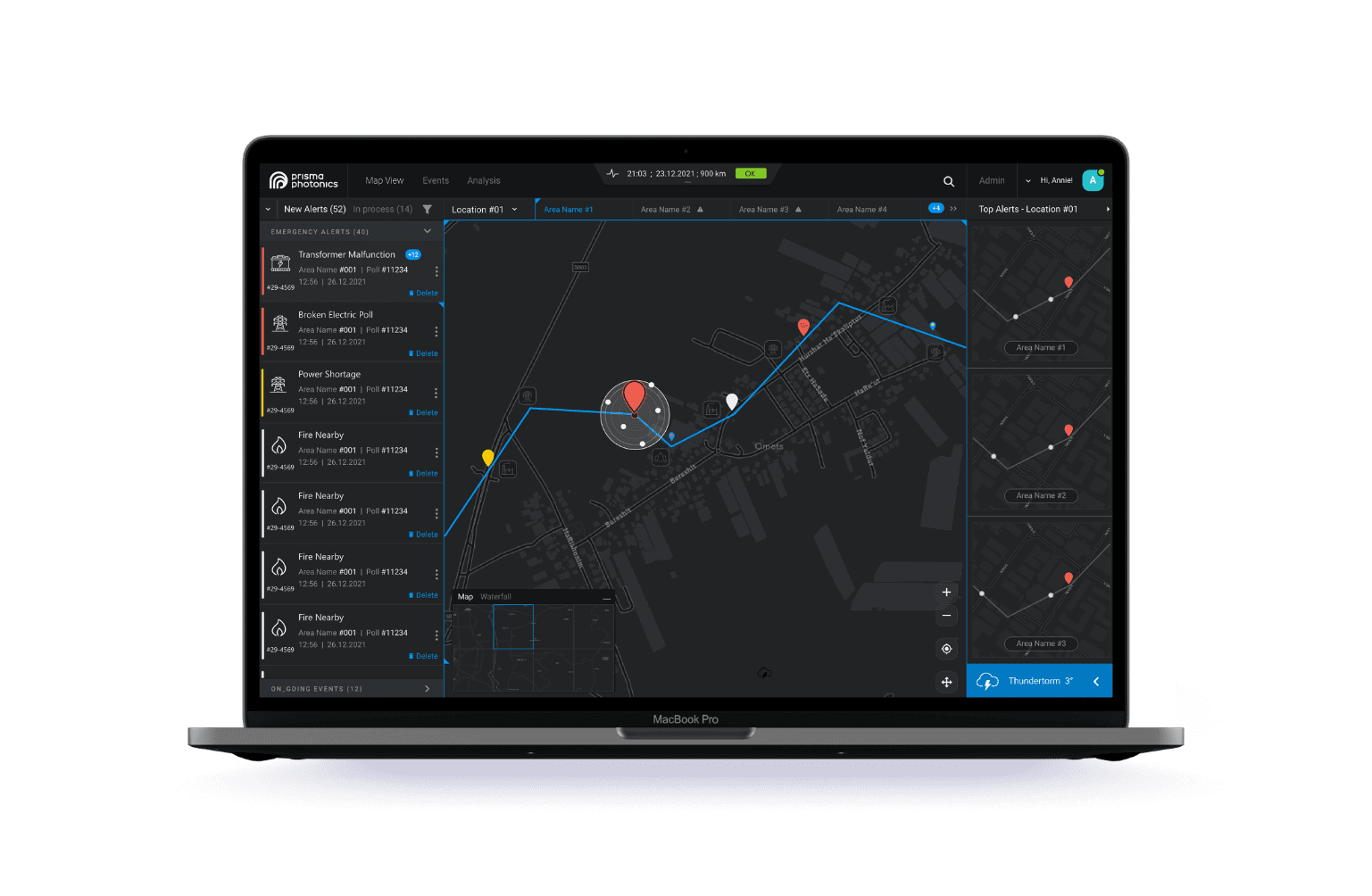Fiber Sensing – Looking Far Beyond
Prisma Photonics solutions monitor the most critical infrastructure using existing optical fiber, which is turned into a distributed acoustic sensor, extending for hundreds and thousands of kilometers. Sensing every point on the asset in real-time, collecting highly detailed acoustic signatures fed into a machine learning algorithm. The algorithms classify the data, ignoring noise and interferences, providing accurate alerts without false alarms.

How it Works
Prisma Photonics Fiber Sensing works by connecting an optical interrogator unit into a standard single-mode optical fiber. It is one fiber, part of a cable laid alongside the monitored asset, probably for communications purposes. The Interrogator transmits optical pulses that propagate down the fiber. A minute fraction of the light is reflected from each point along the fiber. The Interrogator measures the reflected light to determine the strain, temperature, pressure, and other quantities over hundreds of kilometers of fiber with sub-meter resolution. The fiber is turned into a continuous acoustic sensor – as if there were tens of thousands of microphones spanning hundreds of kilometers.
Prisma Photonics Hyper-Scan™ is a quantum leap over first-generation fiber sensing technologies. The quality of the data gathered is so high that the algorithmic engine, using a mixture of machine learning and mathematical algorithms, can accurately classify events and not just detect unusual signals. This unprecedented level of data produces reliable alerts in real-time, with meters of accuracy while drastically reducing false-positive & negative alarm rates (FAR) and nuisance alarm rates (NAR).


